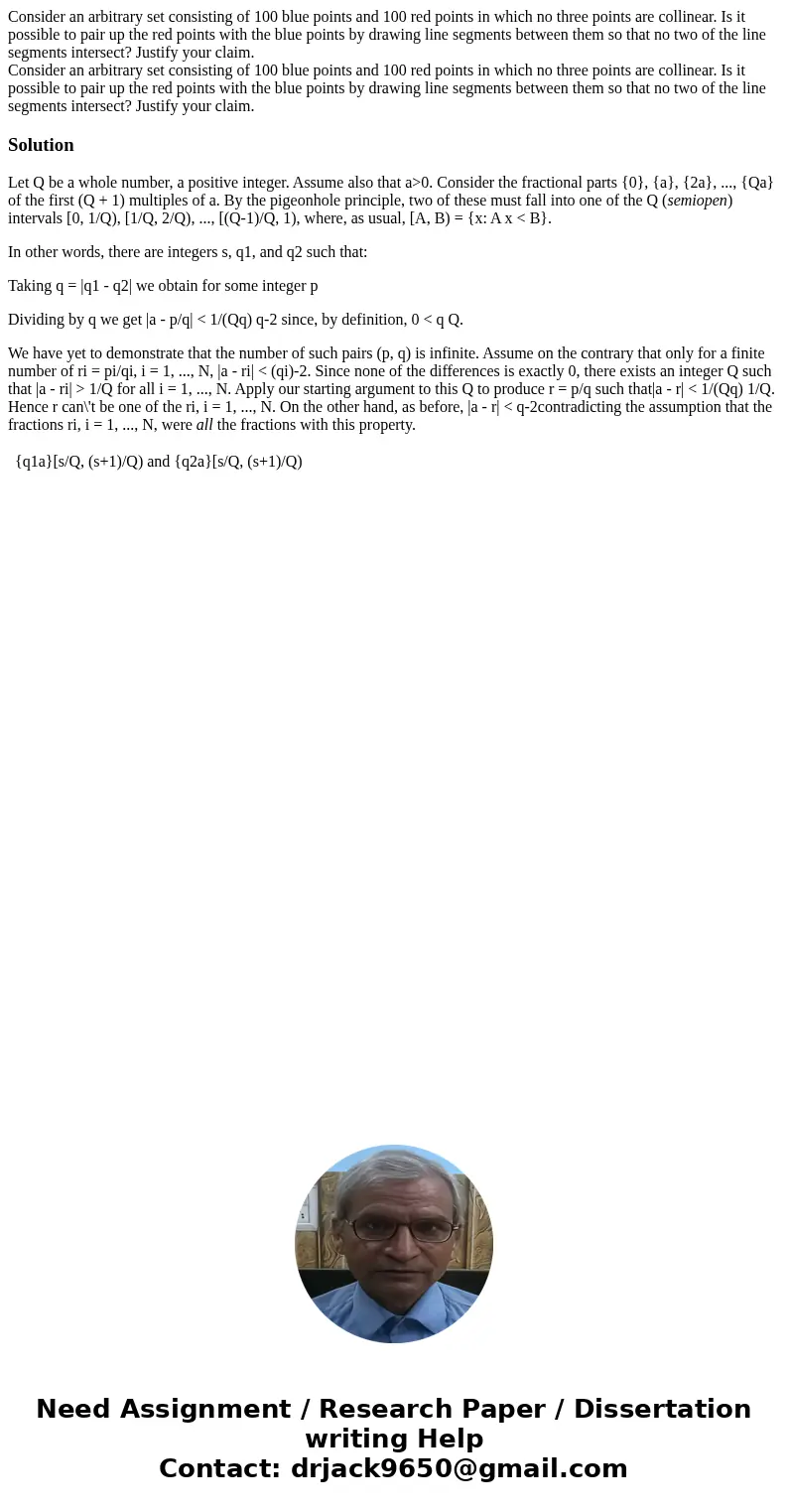Consider an arbitrary set consisting of 100 blue points and
Solution
Let Q be a whole number, a positive integer. Assume also that a>0. Consider the fractional parts {0}, {a}, {2a}, ..., {Qa} of the first (Q + 1) multiples of a. By the pigeonhole principle, two of these must fall into one of the Q (semiopen) intervals [0, 1/Q), [1/Q, 2/Q), ..., [(Q-1)/Q, 1), where, as usual, [A, B) = {x: A x < B}.
In other words, there are integers s, q1, and q2 such that:
Taking q = |q1 - q2| we obtain for some integer p
Dividing by q we get |a - p/q| < 1/(Qq) q-2 since, by definition, 0 < q Q.
We have yet to demonstrate that the number of such pairs (p, q) is infinite. Assume on the contrary that only for a finite number of ri = pi/qi, i = 1, ..., N, |a - ri| < (qi)-2. Since none of the differences is exactly 0, there exists an integer Q such that |a - ri| > 1/Q for all i = 1, ..., N. Apply our starting argument to this Q to produce r = p/q such that|a - r| < 1/(Qq) 1/Q. Hence r can\'t be one of the ri, i = 1, ..., N. On the other hand, as before, |a - r| < q-2contradicting the assumption that the fractions ri, i = 1, ..., N, were all the fractions with this property.
| {q1a}[s/Q, (s+1)/Q) and {q2a}[s/Q, (s+1)/Q) |

 Homework Sourse
Homework Sourse